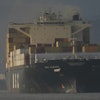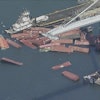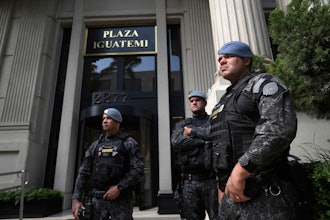OMAHA, Neb. (AP) -- A Nebraska economist says he sees signs the regional recession will rival the 1981-82 recession for unemployment. He says North Dakota was the only state in the region with an economic indicator of expansion last month.
Professor Ernie Goss of Creighton University said the primary index from his Mid-America Economic Survey has plunged to its second record low in as many months. The November index hit 37.8 in November, down 2.1 percentage points from October.
Any score below 50 on the index, which ranges between zero and 100, indicates a contracting economy over the next three to six months.
Goss said North Dakota was the only state to have with an economic indicator above growth-neutral. The figure dipped to 55.7 from 61.1 in October and 63.9 in September.
"Despite healthy growth for the rest of North Dakota's economy, manufacturing employment declined 0.8 percent over the past year. However, I expect the state's economy to grow, albeit at a slow pace, and its seasonally adjusted unemployment rate to remain at 3.4 percent well into 2009," Goss said.
The regional readings are much lower than those recorded before and during the 2001 recession, he said.
"The regional economy is now in a recession, and I expect it to rival the recession of 1981-82 in terms of joblessness and job losses," Goss said in a statement released late Sunday.
States in the survey are Arkansas, Iowa, Kansas, Minnesota, Missouri, Nebraska, North Dakota, Oklahoma and South Dakota.
The survey index on confidence, which looks ahead six months, also hit a record low in November, 22.4, compared with 22.8 in October.
"Despite very forceful action by the U.S. Treasury and the Federal Reserve, the business confidence index has been below 40.0 for all of 2008, reflecting an economic outlook that is at its lowest level since we began the survey in 1994," said Goss.
The November employment index dropped to 39.0 from 47.4 in October.
"This is the weakest employment reading that we have recorded since we began the survey in 1994," Goss said. "I expect regional job losses to mount in the months ahead with rapidly rising unemployment rates for most states.
The index's gauge of wholesale inflation plummeted to 49.6, its lowest level since the 2001 recession. The October figure was 61.6 and 84.0 in September.
"The swift decline in the prices-paid index is a result of weakening regional, national and global economies and a strengthening U.S. dollar," Goss said. "Despite the Federal Reserve's very aggressive interest rate cuts and increases in the money supply, I expect downturns in oil prices and global economic activity to continue to place downward pressure on inflation at the wholesale level in the months ahead."
The survey report carried more weak trade numbers.
For the fifth month in a row, new-export orders dropped. The November reading was a record low of 36.8, down 2.6 percentage points from the previous low of 39.4 in October.
And, the report said, the imports index slumped for the fourth month in a row.
Other components of November's overall index:
-- new orders at 30.4, down from 32.8 in October;
-- production at 35.4, down from 38.1;
-- inventories at 45.0, down from 47.4;
-- and delivery lead time at 50.2, down from 52.2.
The Creighton Economic Forecasting Group has conducted the monthly survey since 1994.
The Institute for Supply Management, formerly the Purchasing Management Association, began to formally survey its membership in 1931 to gauge business conditions. The Creighton Economic Forecasting Group uses the same methodology as the national survey.














